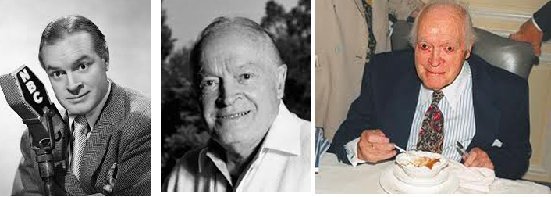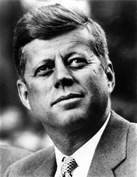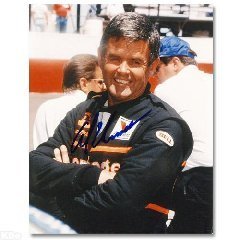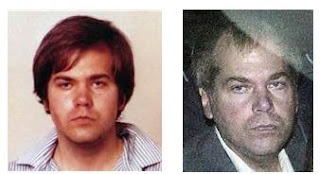The lawn mower was invented by Edwin Beard Budding in 1830 in Brimscombe and Thrupp, just outside Stroud, in Gloucestershire, England. Budding's mower was designed primarily to cut the grass on sports grounds and extensive gardens, as a superior alternative to the scythe, and was granted a British patent on August 31, 1830.
Budding's first machine was 19 inches wide with a frame made of wrought iron. The mower was pushed from behind. Cast-iron gear wheels transmitted power from the rear roller to the cutting cylinder, allowing the rear roller to drive the knives on the cutting cylinder; the ratio was 16:1. Another roller placed between the cutting cylinder and the main or land roller could be raised or lowered to alter the height of cut. The grass clippings were hurled forward into a tray-like box. It was soon realized, however, that an extra handle was needed in front to help pull the machine along. Overall, these machines were remarkably similar to modern mowers.
Two of the earliest Budding machines sold went to Regent's Park Zoological Gardens in London and the Oxford Colleges. In an agreement between John Ferrabee and Edwin Budding dated May 18, 1830, Ferrabee paid the costs of enlarging the small blades, obtained letters of patent and acquired rights to manufacture, sell and license other manufacturers in the production of lawn mowers. Without patent, Budding and Ferrabee were shrewd enough to allow other companies to build copies of their mower under license, the most successful of these being Ransomes of Ipswich, which began making mowers as early as 1832.
His machine was the catalyst for the preparation of modern-style sporting ovals, playing fields (pitches), grass courts, etc. This led to the codification of modern rules for many sports, including for football, lawn bowls, lawn tennis and others.
It took ten more years and further innovations to create a machine that could be drawn by animals, and sixty years before a steam-powered lawn mower was built. In the 1850s, Thomas Green & Son of Leeds introduced a mower called the Silens Messor (meaning silent cutter), which used a chain drive to transmit power from the rear roller to the cutting cylinder. These machines were lighter and quieter than the gear-driven machines that preceded them, although they were slightly more expensive.[3] The rise in popularity of lawn sports helped prompt the spread of the invention. Lawn mowers became a more efficient alternative to the scythe and domesticated grazing animals.
Manufacture of lawn mowers took off in the 1860s. By 1862, Ferrabee's company was making eight models in various roller sizes. He manufactured over 5000 machines until production ceased in 1863. The first grass boxes were flat trays but took their present shape in the 1860s. James Sumner of Lancashire patented the first steam-powered lawn mower in 1893. His machine burned petrol and/or paraffin (kerosene) as fuel. These were heavy machines that took several hours to warm up to operating pressure. After numerous advances, these machines were sold by the Stott Fertilizer and Insecticide Company of Manchester and Sumner.
Rotary mowers can throw out debris with extreme velocity and energy. Additionally, the blades of a self-powered push mower (gasoline or electric) can injure a careless or inattentive user; consequently, many come equipped with a dead man's switch to immediately disable the blade rotation when the user is no longer holding the handle. In the United States, over 12,000 people per year are hospitalized as a result of lawn mower accidents. In 2016, 86,000 adults and 4,500 children were admitted to the emergency room for lawnmower injuries. The vast majority of these injuries can be prevented by wearing protective footwear when mowing. The American Academy of Pediatrics recommends that children be at least 12 years old before they are allowed to use a walk-behind lawn mower and at least 16 years of age before using a riding mower and that they "should not operate lawn mowers until they have displayed the necessary levels of judgment, strength, coordination, and maturity". Persons using a mower should wear heavy footwear, eye protection, and hearing protection in the case of engine-powered mowers.
A 2001 study showed that some mowers produce the same amount of pollution (emissions other than carbon dioxide) in one hour as driving a 1992 model vehicle for 650 miles. Another estimate puts the amount of pollution from a lawn mower at four times the amount from a car, per hour, although this report is no longer available. Beginning in 2011, the United States Environmental Protection Agency set standards for lawn equipment emissions and expects a reduction of at least 35 percent.
Get the excitement and great taste of beef tacos without the work of making individual tacos. This Beefy Taco Bake is a great start to a Mexican potluck menu and is sure to make your family happy and your life easier!
- 1 pound ground beef
- 1 (10-3/4-ounce) can condensed tomato soup
- 1 cup salsa
- 1/2 cup milk
- 6 (6- to 8-inch) flour or corn tortillas, cut into 1-inch pieces
- 1 cup shredded Cheddar cheese, divided
- Preheat oven to 400º. Coat a 2-quart baking dish with cooking spray.
- In a large skillet, brown ground beef over medium-high heat, stirring until crumbled; drain. Stir in soup, salsa, milk, tortillas, and 1/2 cup cheese; spoon into prepared baking dish.
- Cover and bake 30 minutes, or until hot. Sprinkle with remaining 1/2 cup cheese, and serve.
****Freezer instructions: Follow step 2 above. Once the recipe is prepared, cover with a few layers of foil and freeze. To thaw, place in fridge 24 hours in advance of baking. Once thawed, bake at regular temperature and time.
- Replace a zipper tab
- Unclog a spray bottle
- Unclog a single-serve coffee maker
- Hem holder
- Emergency hooks for broken necklaces
The Paper Clip Project
Inspired by the story of the protesting Norwegians and their paper clips, the students began to collect six million paper clips – one paper clip representing one Jew who perished during the Holocaust. Adults today still wrestle with how the Holocaust could even happen. Imagine middle-school students trying to understand the magnitude of such an event on humanity.
















